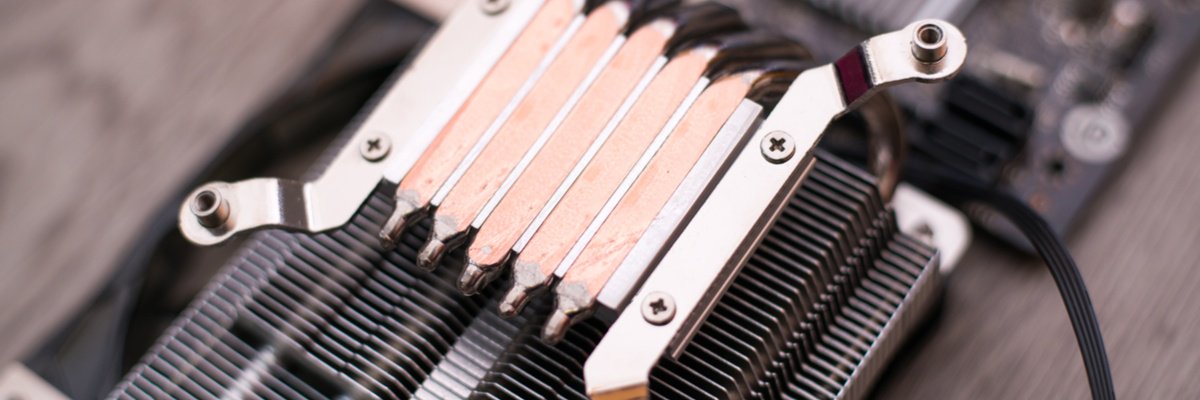

By: Eric Toro on January 30th, 2018
Don’t Overheat: Thermal Interface Materials Protect Your Product
When they operate, electronic components produce heat. And if they become too hot, they can degrade the function of their devices. These products must be able to manage heat to maintain reliable, long-term function. Thermal dissipation and management is the means by which electronics maintain workable temperatures.
Any component that generates power can cause fluctuations in a product’s temperature. But to remain operable, products need a way to wick high heat away from its other components, especially under heavy use. Thermal interface materials – also known as TIMs – are often used to manage that process. Their role is to transfer or distribute heat away from a product’s heat source to a designated heat sink and out of the device.
To optimally manage the heat generated by electrical components, you must select and implement the appropriate form and thermal conductivity of a TIM, amongst other factors. But which TIMs do your products need? And how must you implement them within your products?
Want to stay up to date on the latest thermal management technologies and trends? Get updates from our blog right in your inbox!
This post outlines your key considerations, and will help you choose and understand how thermal interface materials affect the operability of your products.
Thermal Conductivity
Thermal interface materials are specifically designed to transfer heat from the heat-generating component to a cooling component. The rate at which TIMs can dissipate that heat – or the rate at which heat passes through a material – is known as its thermal conductivity. TIMs have unique rates of thermal conductivity, which are measured in Watts per meter Kelvin, or W/(m*K).
A TIM with a high W/(m*K) will be quicker to cool down a device, and is best suited for hotter components. A material with a lower W/(m*K) is often advantageous for long-term heat management situations.
In general, good conductors of electricity are also better thermal conductors – metals such as aluminum, copper, and silver, for example. Conversely, insulators of electricity such as rubber, plastic and wood have lower rates of thermal conductivity.
Thermal Resistance
The thermal conductivity of a material is not affected by the thickness of a product. But the overall thermal resistance of a product is affected by its thickness. Its overall resistance is a function of the material's thermal conductivity, the contact area, and the TIM thickness.
How a TIM is implemented within a product is one of the most important factors. Your product will have the highest thermal resistance if its heat source and heat radiator (heat sink) are close together, and your TIM is in contact with as much of your product’s heat source as possible.
For the latter reason, thermal pads are typically cut to the exact dimensions of the heat-generating component that requires thermal dissipation. By making the TIM pad as large as the component and maximizing its surface area, you can achieve the greatest possible thermal resistance.
Hardness and Compression Force
A material’s hardness is defined as its ability to resist indentation, measured in durometers. Its hardness is also related to is compression force: the application of power, pressure or exertion against an material that causes it to be squeezed or compacted. Thermal interface materials are specifically designed to transfer heat with a compression force that meet the needs of both the heat-creating component and the heat-dissipating component within a device.
A common illustration of how compression force affects thermal management is someone holding a hot pan. The tighter they hold the pan (the more force they apply) the more heat they feel in their hand. If they relax their grip (apply less force to the handle) the more resistance they have to the pan’s heat.
Thus, TIMs with lower compression forces are more resistant to heat and less likely to damage the electronic components of a device. Conversely, materials with greater compression forces are less capable of withstanding heat and are more likely to damage its device’s other components.
Dielectric Resistance
Another key factor to thermal management is a material’s dielectric resistance. Every material has a dielectric breakdown voltage – the breaking point at which that non-conductive material becomes electrically conductive. Depending upon a TIM’s thickness and dielectric resistance, it will eventually conduct an electrical current.
When a current flows through a TIM, it will pass safely through only if the material can withstand the voltage of that current. If the current’s voltage is too high for the electrical insulator, however, it will conduct the TIM and lead to heat damage within its device.
You can test the dielectric resistance of a TIM by placing electrodes on both sides of the material and applying an increasing amount of voltage until a current begins to flow.
Maintain Proper Electrical Function
With greater attention to thermal management, manufacturers are making great strides in reducing the heat produced by electronics, and designing products that more effectively dissipate heat. A product’s success is dependent on its ability to maintain operability, after all.
In your design process, make sure you too are considering the material composition, thermal conductivity, hardness, thermal and dielectric resistance of your product. If you want to learn more about thermal dissipation and interface materials, read more of our informative blogs.
Just click here to subscribe to our expanding technology blog

